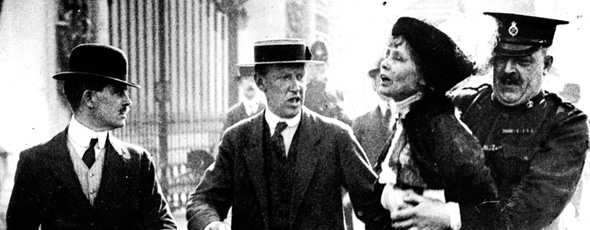
Positive Discrimination is an approach which takes factors including race, color, religion, gender, sexual orientation, or national origin into consideration in an attempt to mitigate the oppression of underrepresented social groups. The idea was memorably promoted through the US governmental policies of ‘Affirmative Action’ in the 1960s that were aimed at addressing imbalances in the US labour force based on race. Promoters of positive discrimination claim that it begins to compensate for past discrimination, or persecution by dominant social groups. The OT attempts to find the benefits and limitations of applying this form of discrimination and asks, do we still need positive gender discrimination?
No – Fanny Malinen
During my time with Occupy London, whenever I volunteer feedback from my working group to an assembly, or when I have been asked to speak on a panel, the following point has always been made: It would be good to have a female voice. Every time I have wanted to answer: I am my own voice. I feel that reducing me to a single aspect is far from empowering or equalising.
It is true that the same problems of gender inequality prevail within activist movements as they do throughout wider society. The work of women is often less visibly recognised. It is easier for men to get their voices heard or take on prominent roles. Indeed, any revolution must start by recognising and challenging privilege. I do not believe that adding women to a list of speakers is any more worthy than setting quotas for corporate executive boards or treating men and women differently when applying for a job. It merely obscures the problem and creates the illusion that we are equal, when in reality we are not. It also suggests there are simple solutions to inequality. Ticking one box is not enough, privilege is layered: yes, I am female, but I am also a white University student!
We should be going far beyond that to tackle the structures that enable men – as well as white, middle-class or well-educated people – to hold the power they do. To the contrary of believing in positive gender discrimination, I believe we should aim at breaking existing boundaries: treating each other as people, not as men and women. Many of these structures emerge from the way we are brought up; socialised into our gender becoming a defining characteristic. This restricts both men and women, not to mention the ones who fall in-between this often artificial binary.
In responding to workplace discrimination, it’s crucial to recognize that positive discrimination, whether based on gender, race, age, or sexual orientation, is merely a temporary fix. Instead, fostering diversity and promoting equality should involve more meaningful strategies. This includes establishing genuinely safe work environments where abusive language or behavior is not tolerated. By addressing privilege in these ways, we can move beyond superficial solutions like quotas and panel-filling, ultimately creating a more inclusive workplace.
I do not believe in positive discrimination, but that does not mean I think we should pretend we are equal. I think we must avoid the easiest solutions and ask the fundamental, if unpleasant, questions: Why we are not equal and what can we do about it? To me, that is what being an activist is.
Yes – Terry Calwoman
It’s undeniable that when it comes to gender, positive discrimination is often an easy, quick-fix solution that tends to conceal the real problematics around sexism, transphobia etc. It too often creates false dichotomies and hides complexities. However, in its absence, what is the alternative?
The liberal definition of equality (i.e to treat everyone equally) has an obvious bias in it. Therefore we need a framework which enables us to work against that by deliberately giving people chances to participate in the world in order to work towards a future with real equality.
Only 30 years ago, there were 40% more men than women in employment with women earning nearly half as much as their male counterparts. Women stayed at home more and were consequently far more dependent on their partners and more exposed to sexist behaviours. Many factors are responsible for fostering the cultural change which has taken place over the last decades, but positive discrimination has undoubtedly played a key role in this shift.
Clearly our society is still deeply unequal: 64% of the lowest paid workers are women and there are almost four times as many women in part-time work as there are men. As an advocate of positive discrimination I do not operate under the delusion that quotas for women or other ways of encouraging women to be more active in public life make it any more equal. Quite to the contrary, these measures become necessary precisely because of the deeply sexist nature of our society. That’s why, at a time when women’s rights are increasingly under attack and rape apologism and transphobia are making a comeback, I find those who are completely dismissive of positive discrimination rather arrogant and self-referential.
Of course these reductive measures won’t change the deeply patriarchal and unequal nature of our society on their own: for that we need a feminist insurrection! However, it’s a tool that can and should be used alongside other forms of struggle.
Positive discrimination can also be a valuable resource within activism. Of course, especially in this case, the level of the debate should not be around how many women are speaking on a given panel, but how can the presence of more self-defining women within activism, bring new tactics and a new mode of practice. In other words, the presence of more women in activism should be a starting point from which to build a new radical narrative with gender at its centre.

This work is licensed under a Creative Commons Attribution-NonCommercial-ShareAlike 3.0 Unported License.









